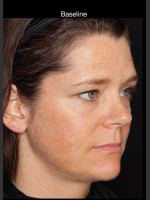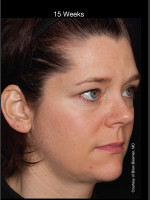Dry Winter Skin: The Causes & How to Prevent It

Winter... what a fun and enjoyable time when you go skiing in a mountain resort or build a winter bonfire and make s'mores. Be careful though, one part of your body might not share the excitement; your skin. Winter cold, extreme temperatures, icy wind and lack of hydration can cause serious dry winter skin.
The Culprit of Dry Skin
What really makes our skin so much drier in the winter than any other season of the year? The answer is in basic chemistry: cold air cannot hold moisture. As outside temperatures drop far below the freezing point, the frost gets increasingly dry. And when there is more moisture in your skin than there is in the air, the moisture gets pulled out of your skin, leaving it dehydrated, scaly and dull-looking. If you are already a dry or very dry skin type, chances are you'll be more affected by winter months than your oily fellow sufferers.
Your skin can also be more vulnerable based on your geographic area. Dry winters in Michigan or Minnesota will be far more damaging to your skin than the West Coast climate whose relative humidity is higher during the winter season, keeping the skin more moist and hydrated.
Keep the Moisture In
There is one thing that makes dry skin even drier and that's hot water. Hence the common recommendation to take lukewarm or cold showers. But then again, is a cold shower what we truly desire on a typical December morning or after spending the day fighting a winter storm? While extremely hot showers are still not recommended, according to dermatologists there is a way to avoid the excruciating moment of the cold water touching your already freezing skin:
- If you take hot showers, use mild soap, ideally with olive oil.
- Use moisturizers with a thick, creamy texture. The ones containing lanolin are even better as they help bind in moisture.
? Most importantly, apply the moisturizer immediately after your shower or bath, when your skin is still wet, before toweling off. That will seal in the moisture and keep the water in your skin. The downside of this hydration treatment is that the combination of water and moisturizer can get slippery, so be careful on your bathroom floor.
Diet Matters
Water-rich foods should be a regular part of your diet, regardless of the season. Fruits such as watermelon, berries, papaya or apples are almost 90 percent water, not to mention all the essential vitamins and minerals they provide to your body. However, getting a watermelon in the middle of January can be a challenge, so if you can't find fancy tropical fruit at your local grocery store, at least try to increase your water intake.
Most people don't feel as thirsty in winter as they would in hot summer temperatures, and the amount of fluid in the body gets depleted very quickly. Dehydration is your skin's worst enemy, making it more prone to scales and cracks. Eight glasses of water a day is considered the gold standard for good body hydration. If plain water is not your cup of tea, you can go with actual tea, preferably non-caffeinated.
It's Not Just about the Face
Most people pay far more attention to their facial skin than the rest of the body. It's natural- our face is always in the spotlight, exposed to weather conditions as well as other people's judgments. But make no mistake, the dry, cool air can affect your skin despite being protected by thick clothes or snow boots. Especially for those of you who already suffer from a chronic skin condition, such as rosacea, psoriasis, or even acne, wintertime will be all the more damaging. The extreme temperatures and sudden changes when you walk out from a central-heated house into a freezing morning exacerbate chronic skin conditions, resulting in severe flares.
Using moisturizer to hydrate the skin is paramount- whether it's your face, lips, hands, feet, or any other body area! And if you experience a sudden flare that your usual home treatment can no longer fix, talk to a dermatologist. It sounds like a cliche- but doctors are trained to know what is best for your specific problem and how to keep the flares at bay.
Sunscreen Is Forever
Did you think that as the days are getting shorter and you can barely see the sun through the winter clouds, sunscreen is no longer necessary? Think again. According to dermatologists, protecting your skin against UV rays should be a year-round commitment. Sun exposure has a cumulative effect, which means that even a short walk to work in the morning without a layer of broad-spectrum SPF will eventually result in fine lines and brown spots on your skin. 80 percent of the sun rays can still penetrate the overcast clouds, so whether you're spending your day on a ski slope or in a city office, apply sunscreen with SPF 30 or higher religiously, every morning. Your effort will be rewarded with glowing, healthy-looking skin!


